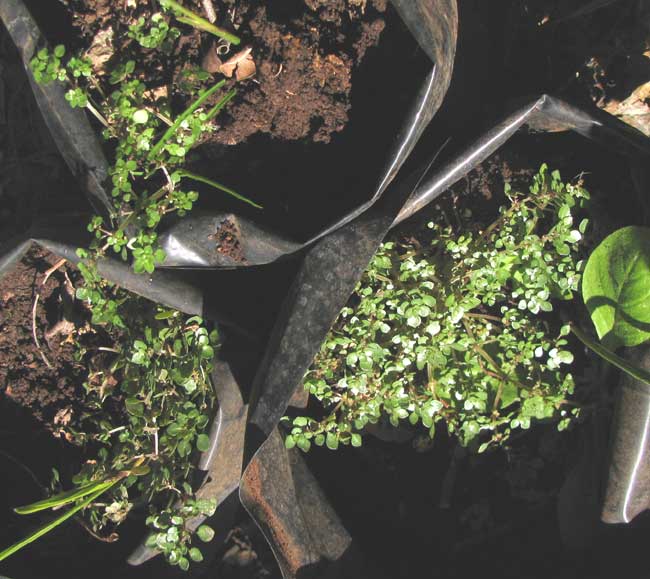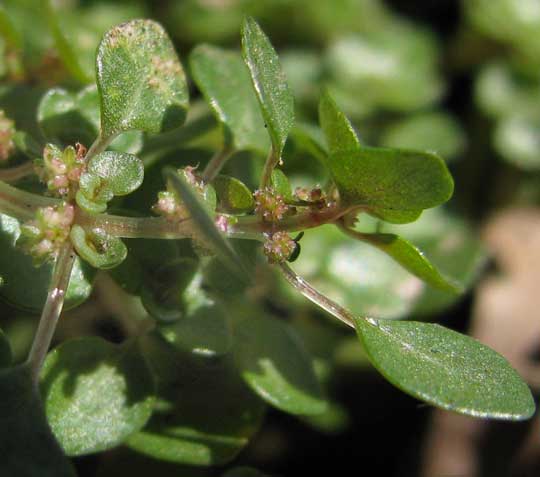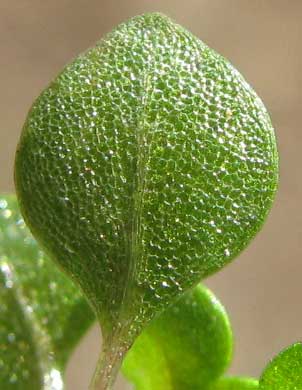Excerpts from Jim Conrad's
Naturalist Newsletter

from the December 12, 2010 Newsletter issued from Hacienda Chichen Resort beside Chichén Itzá Ruins, central Yucatán, MÉXICO; limestone bedrock, elevation ~39m (~128ft), ~N20.676°, ~W88.569°
ARTILLERY PLANT
I grow lots of plants in black plastic bags for later transplanting. If you keep the bags reasonably watered, no matter what's planted in them, eventually a small, ferny herb begins carpeting the bags' soil. The herb also grows rampantly in greenhouses and on the Hacienda's moist, shaded limestone walls. You can see what it looks like in some bags of palm seedlings above.
This little herb's flowers are only about 1/50th of an inch across (0.5mm). Reduced, unisexual male and female flowers are crammed together at the bases of leaf petioles and without a microscope it's hard to make much out of them. You can see a typical sprig tip below:

This is Artillery Plant, PILEA MICROPHYLLA, a member of the Nettle Family, the Urticaceae. It's thought to be native to the American tropics, but it also shows up in the US Deep South, Asia and on Pacific Islands. Several Pilea species are known. Pilea microphylla is distinguished from them by its "entire" leaf margins (no teeth or scallops), its prostrate growth form, and its herbaceous nature.
The "Artillery" in the name refers to the fact that on sunny days the male flowers discharge their pollen forcibly, like artillery.
Members of the Nettle Family have their leaf epidermises dotted with marks formed by cystoliths. Cystoliths are variously shaped calcium carbonate crystals inside the leaves' epidermal cells. Calcium carbonate is just limestone. To a leaf-eating invertebrate, cystoliths in a leaf are like pebbles in the porridge. Below, you can see the Artillery Plant's cystolith-ornamented lower leaf-epidermis:
